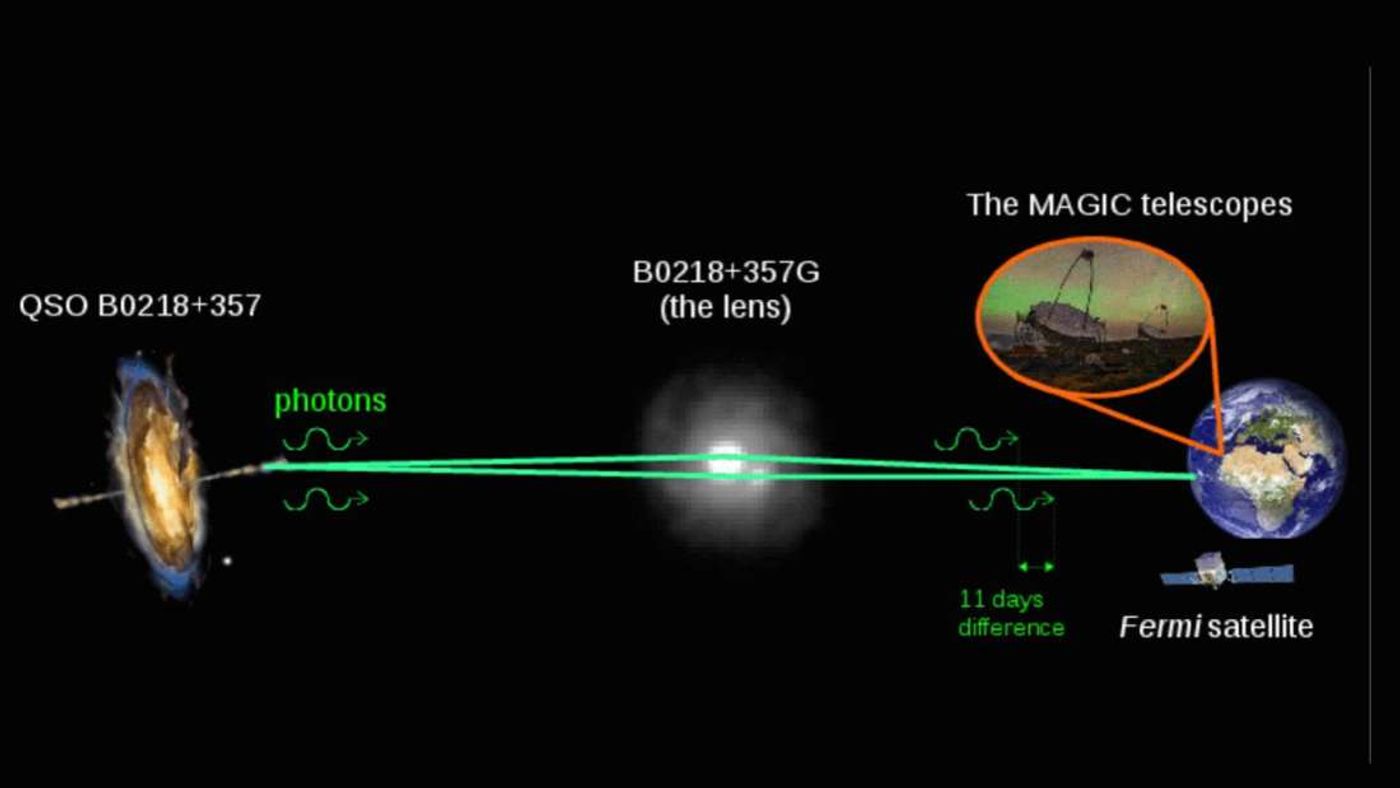Astronomers Observe Most Distant Gamma Ray Source Yet
Astronomers had the rare opportunity to view the photons from a source of gamma ray emission from an explosion that happened more than 7 billion years ago in a distant galaxy halfway across the universe. It’s the furthest source of high-energy light ever detected in the universe today.
Using the MAGIC (Major Atmospheric Gamma Imaging Cherenkov) telescope at the Roque de los Muchachos Observatory in Garafía, astronomers have observed what is known as a blazar, a type of high gamma ray emission coming from a supermassive black hole at the center of a galaxy that can be seen from distant galaxies.

Image Credit: Robert Wagner
In the case of the blazar, which is being referred to as QSO B0218+357, the gamma rays are being fired off directly towards Earth, giving us a front row seat to the photons that are being given off.
Interestingly, this is really the only time that such celestial events would ever be visible at these insane distances. If those gamma rays were otherwise pointing in another direction, we would not be able to see them with modern space imaging equipment.
Published in the journal Astronomy & Astrophysics, the study details a gravitational lensing effect produced by a galaxy midsection, known as B0218+357G, between the gamma ray source and the telescopes observing the phenomenon on Earth.
The midsection’s gravitational forces were effectively deflecting photons produced by QSO B0218+357, influencing them in such a way that it produced two separate rays.

Image Credit: (MAGIC Image credits: Daniel López/IAC; Hubble image of B0218+357G credits: NASA/ESA; AGN image credits: NASA E/PO - Sonoma State University, Aurore Simonnet)
Some of these rays went over the top of the B0218+357G, while others went under the bottom. Notably, the ones seen from the bottom of B0218+357G had to travel further, so they took longer to get here; they were observed with MAGIC 11 days later, confirming Albert Einstein’s General Theory of Relativity.
The astronomers were unable to view those coming from the top at the time because they coincided with a full Moon, which means MAGIC couldn’t get a clear image due to the sky being filled with the Moon’s light pollution. 11 days later, however, the full Moon was no more and it provided the astronomers with the clear skies they needed.
The sheer distance of the origin of the rays is what’s exciting astronomers. Since it’s the furthest ever observed, it has nearly doubled the distance we thought we could observe gamma ray sources from.
"Many gamma rays are lost when they interact with photons which originate from galaxies or stars and have a lower energy," says Razmik Mirzoyan, a spokesperson for the collaboration. "With the MAGIC observation, the part of the universe that we can observe via gamma rays has doubled."
"The observation currently points to new possibilities for high-energy gamma ray observatories - and provides a pointer for the next generation of telescopes in the CTA project," Mirzoyan concluded.
The findings open new doors for space observation. Now understanding that we can observe these kinds of phenomenon at these kinds of distances, these astronomers have just opened an entirely new door of curiosity.
Source: EurekAlert (1), (2)








